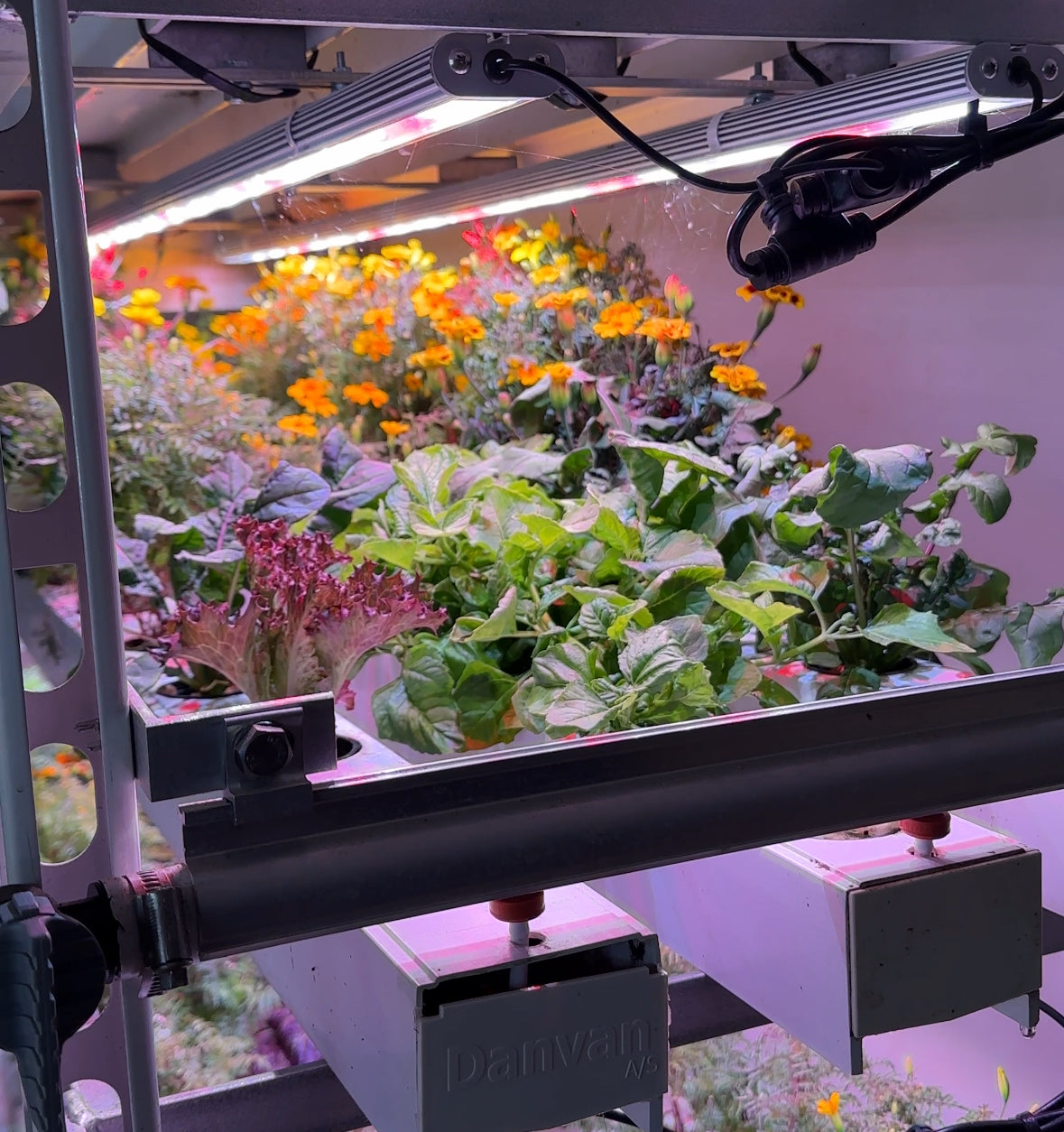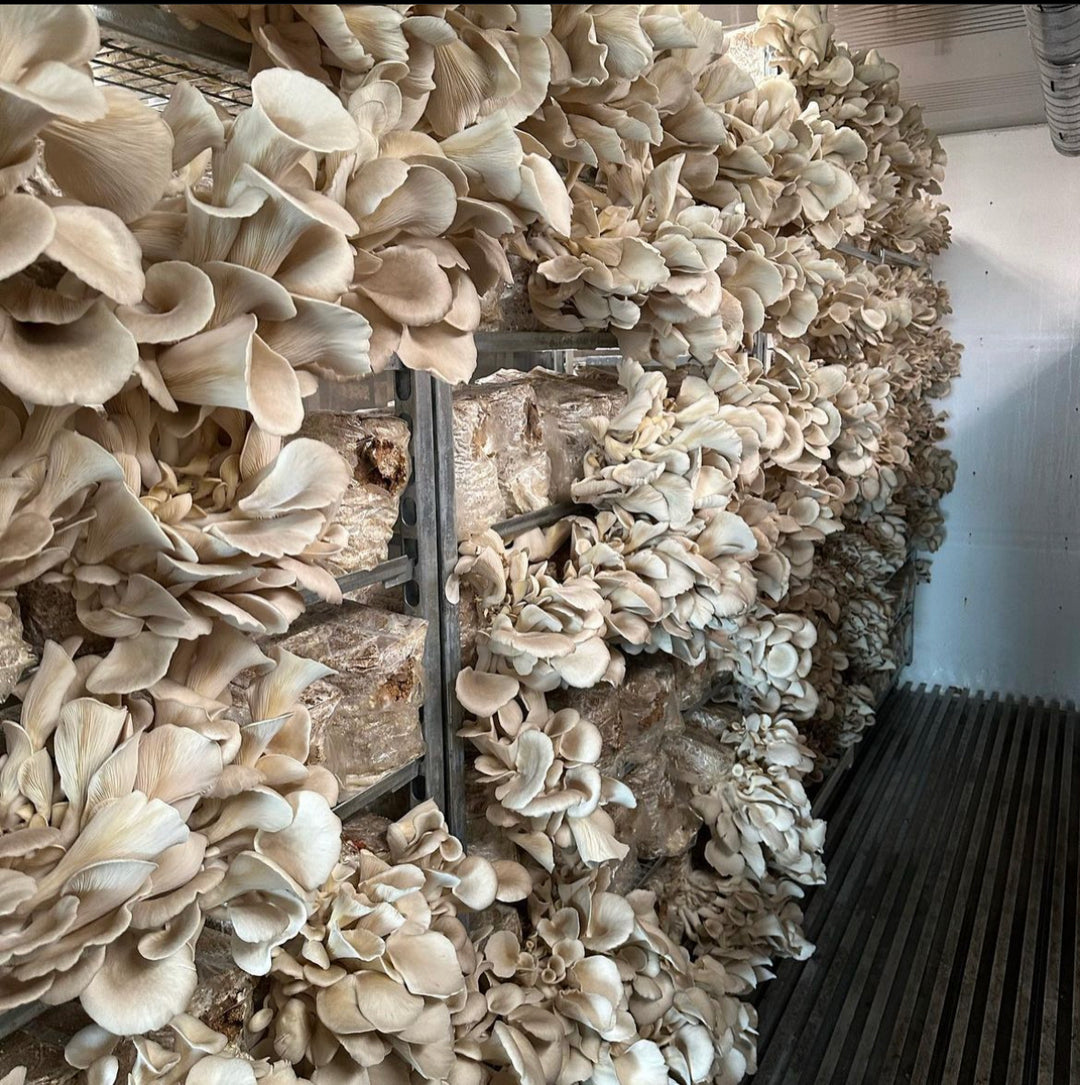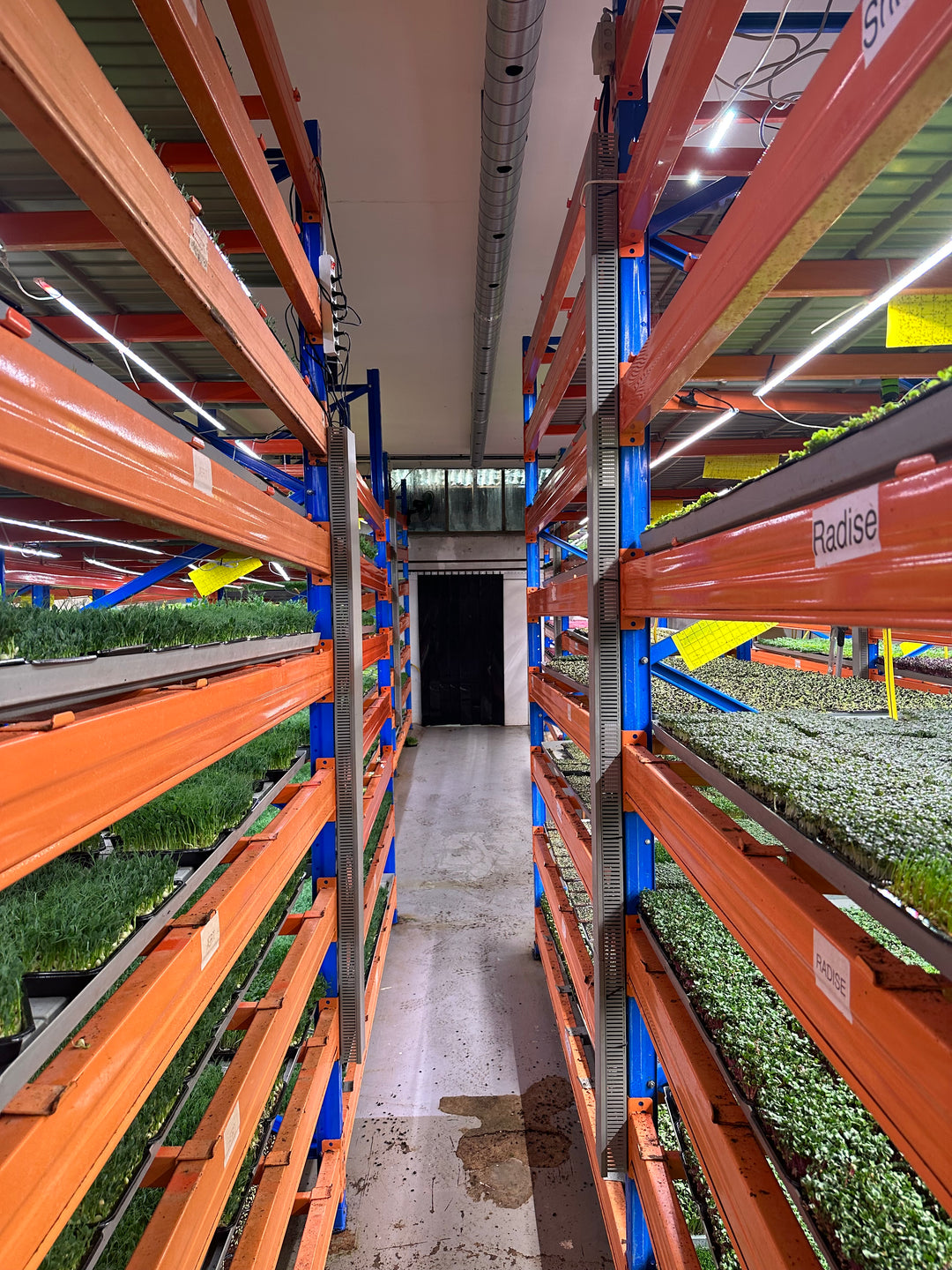Building your own vertical farm

Vertical farming, while incredibly promising, has a reputation for high upfront costs. Many
ambitious startups have learned this the hard way, burning through significant capital before achieving a sustainable business model. The key to success, especially for new entrants, often lies in a bootstrapped, phased approach, starting small to prove concepts and build expertise before committing to massive investments. This "lean startup" methodology is crucial to avoiding costly mistakes.
Here's how to navigate vertical farming with a smart, incremental strategy:
1. Start with the Smallest Viable Product (SVP) – Your "Micro-Farm"
Proof of Concept
Instead of planning a multi-million-dollar facility, begin at the most basic level to validate your core assumptions:
● Define Your Niche Crop: Don't try to grow everything. Choose one or two
high-demand, fast-growing, and relatively easy-to-grow crops that are
well-suited to hydroponics/vertical setups. Microgreens and leafy greens (like lettuce,
basil, or arugula) are perfect for this stage due to their quick turnover, high market
value, and relatively low initial resource requirements (less intense lighting, simpler
nutrient solutions).
● Minimalist Setup: Forget complex automated systems for now.
○ Space: A spare room, a small basement, a garage corner, or even a
converted shed.
○ Structure: Simple shelving units or DIY PVC pipe structures.
○ Lighting: Basic, affordable LED grow lights that are appropriate for your
chosen crop. You don't need highly tunable, expensive spectrums yet.
○ Hydroponic System: Start with a simple NFT (Nutrient Film Technique) or
DWC (Deep Water Culture) system, or even basic ebb and flow trays. You
can buy pre-made small kits or assemble them with readily available
plumbing parts.
○ Nutrient Delivery: Manually mixing and testing nutrient solutions, rather than
investing in automated dosers.
○ Environmental Control: Basic fans for air circulation, maybe a small
humidifier/dehumidifier, and a simple thermometer/hygrometer.
● Learn and Document Everything: This stage is all about learning. Keep meticulous
records of:
○ Growth rates, yield, and quality.
○ Nutrient solution recipes and pH/EC levels.
○ Light intensity and photoperiod.
○ Temperature and humidity.
○ Any pest or disease issues (and how you handled them without chemicals).
○ Your time investment for daily tasks.
○ Crucially: Cost of Goods Sold (COGS) per plant/pound. This is vital for
your future business model.
2. Identify Your Market and Validate Demand Early
Even with a small farm, you need customers to prove your product-market fit.
● Local Farmers Markets: This is an excellent low-cost way to sell your produce
directly, get immediate feedback on taste, quality, and price point, and build a local
following.
● Restaurants/Chefs: Approach local restaurants that prioritize fresh, local
ingredients. Offer samples and demonstrate the consistent quality and year-round
availability of your produce. Start with small, consistent orders.
● Community Supported Agriculture (CSA) or Subscription Boxes: Offer a limited
number of subscriptions to friends, family, and local community members. This
provides upfront capital and guaranteed sales.
● Don't Compete on Price (Initially): Focus on the value proposition – freshness,
local origin, pesticide-free, unique varieties. Vertical farm produce often commands a
premium.
3. Build Your Team and Expertise Incrementally
You don't need a team of engineers, agronomists, and data scientists on day one.
● Learn Yourself: Be prepared to become a jack-of-all-trades initially, learning about
plant biology, hydroponics, environmental control, basic plumbing, and electrical.
● Seek Mentorship: Connect with experienced indoor growers, agricultural
universities, or industry associations. Learn from their successes and failures.
● Strategic Partnerships: For specific needs (e.g., HVAC design for scaling,
advanced nutrient analysis), consider consulting rather than immediate hiring.
● Delegate When Necessary: As you grow, identify tasks that can be efficiently
delegated or automated, but understand the fundamentals first.
4. Phased Expansion: The Stepping Stone Approach
Once you've proven your concept at the micro-scale and have validated demand, you can
gradually expand.
● Phase 1: Small-Scale Commercial Unit: Invest in slightly more robust equipment
(e.g., more shelves, better lighting, perhaps a basic nutrient dosing system if manual
is too time-consuming). This might be a single container farm or a dedicated room in
a commercial space.
○ Focus: Optimizing operations, refining plant recipes, and consistently
meeting demand from your initial customers.
○ Financials: Track everything. Can you break even or generate a small profit
at this scale? This is your crucial "traction" for potential future investment.
● Phase 2: Modular Growth: Instead of building one massive farm, think modular.
○ Add Another Unit/Room: Once Phase 1 is optimized and profitable,
replicate the successful model. This allows for controlled growth and
minimizes risk. If one unit faces an issue, the whole operation isn't crippled.
○ Gradual Automation: Introduce automation (e.g., environmental controllers,
automated nutrient dosing, basic monitoring sensors) as needed to reduce
labor and improve precision, rather than a full-scale overhaul.
● Phase 3: Strategic Partnerships & Funding:
○ With solid proof of concept, validated demand, and demonstrable profitability
at smaller scales, you are in a much stronger position to attract external
investment if you choose to scale significantly. Investors want to see reduced
risk. Your data and experience are your strongest assets.
○ Consider partnerships with food distributors, larger retailers, or even real
estate developers looking to incorporate urban agriculture.
5. Common Costly Mistakes to Avoid by Bootstrapping:
● Over-Automating Too Early: Automation is expensive. Manual control allows you to
learn the nuances of your system and crops before sinking capital into equipment
that might not be perfectly suited to your needs.
● Choosing the Wrong Crop First: Starting with high-resource crops (like some
fruiting vegetables) before mastering basic leafy greens can quickly drain funds due
to higher energy demands and longer grow cycles.
● Ignoring Market Research: Building a farm for crops no one wants to buy, or that
are already saturated locally, is a recipe for failure. Validate demand before growing.
● Underestimating Operational Costs: While initial setup costs are high, ongoing
energy, labor, and nutrient costs can also be substantial. Bootstrapping forces you to
be hyper-aware of these from day one.
● Lack of Agronomic Expertise: Believing technology alone will grow plants is a
major mistake. You need to understand plant biology, nutrient requirements, and
common plant issues. Learn by doing.
● Scaling Too Quickly: The "build it big and they will come" mentality is dangerous.
Grow at a pace that allows you to learn, iterate, and adapt without risking massive
capital.
● Poor Supplier Relationships: Start small, build relationships with local suppliers for
basic materials, and look for cost-effective alternatives.
By adopting a bootstrapping mindset and a phased approach, aspiring vertical farmers can
mitigate significant financial risks, gain invaluable hands-on experience, and build a robust,
sustainable business model based on proven results rather than speculative investments.
It’s about building a solid foundation, one successful harvest at a time.


